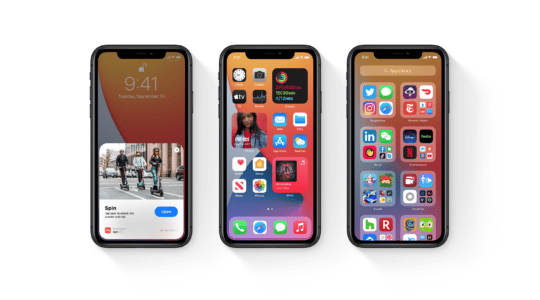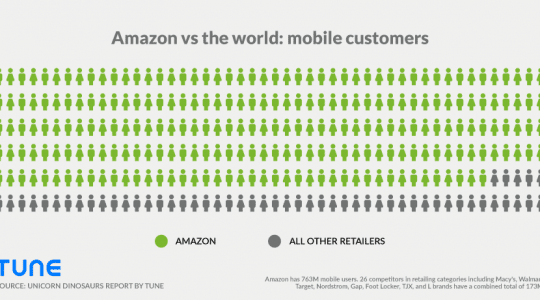It’s been talked about for a while now, surrounded by speculation and rumors. And after month of waiting, it’s finally arrived – the Amazon smartphone is here. Although the buzz leading up to the announcement wasn’t quite on the level of a new iPhone release, the initial response to the phone seems to be positive.
Initial reviews of the hardware and software are good. Like most new smartphones these days, it has a number of cool, albeit slightly gimmicky, features. The big question that remains is how quickly this phone will be adopted. With the resources and power that accompany Amazon, it obviously has a number of advantages that will help. However, it also faces a number of challenges that will be tough for even the retail giant to overcome.
The Uphill
At MobileDevHQ, our world revolves around apps – so it should be of no surprise that the biggest hurdles we see for Amazon to overcome are related to apps. Although their offering has doubled in the past year, they still only have 240,000 apps available in the Amazon store. This is dwarfed by Apple and Google who have over a million each.
The biggest problem this presents is it will make it a challenge for them to steal market share from the iPhone or any of the Android devices. In a recent study, it was shown that 86% of the time people spend on smartphones is within apps. It’s obvious that there is a level of attachment and value placed on the apps. If you spend most of your time in some of your apps, would you switch to a different phone that might not have your favorite game that entertains you on the bus or the calendar app that keeps you on schedule?
A very valid reply to that is, ‘look how fast the Apple and Google Play app stores grew, it won’t be long before Amazon has all the good apps I care about.’ This might be true, especially considering the rapid YoY growth rate. However, one key thing to keep in mind is that when people were making apps for Apple and Google phones, those were the only two real players in the app store market. It was, and still is, a race to get your app built on these platforms so you can capture market share. Amazon is entering a space with two huge, already established players.
It’s an interesting conundrum. Will app developers wait to see how well the Amazon phone is adopted before building apps for it? And if so, will Amazon be able to capture enough market share without these apps to entice developers to build? We’ve already seen measures put in place by Amazon to incentive devs. Recently it was announced that they will pay $5,000 in Amazon coins for every app built that meets their standards. But we’ll have to wait and see how it plays out.
The other problem that their limited app offering presents is a lack of variety. Especially when it comes to smart phones, there are a few key types of apps smart phone users utilize: email, photo, messaging, calendars, and maps. It’s clear by now that people like variety and choice. I use my Sunrise Calendar app every day, but my co-worker uses 24Me, neither of which are available on Amazon. We’ll see how this impacts the adoption rate of the Amazon Fire phone.
The Downhill
Although the problems with the currently limited selection of apps might present a slight challenge for Amazon, it’s nothing they can’t overcome. Especially with all the advantages they have in place to help them along the way.
When it comes to apps, they already have major infrastructure in place that helps them. The biggest, obviously, is the Amazon store and website. This helps them in a number of ways. First, it gives them specific and targeted data to each user searching in Amazon. Unlike Google and Apple, Amazon’s primary business is providing a marketplace. They wouldn’t be as successful as they are if they didn’t provide a great place to shop – which is an important part of the app world. Studies have shown that 65% of users find apps through the app store search, so if Amazon can provide a better marketplace than Google or Apple, it could provide a significant advantage.
Also, because Amazon provides such an extensive shopping experience, apps will have access to shoppers beyond the app store. For example, if someone were looking for a cookbook and searched on Amazon, cookbook apps would have the opportunity to get their product in front of these shoppers. In the case of Apple and Google, the only significant points of exposure for apps are in the app store, meaning that they only capture users who are specifically looking for an app.
The major disadvantage we mentioned above could also play as an advantage. The Google and Apple app stores are crowded, and it’s hard to grab market share. The smaller Amazon store could be seen as an opportunity for developers to compete in a less crowded market. This could lead to a huge influx of apps as people race to be the first big Amazon hit.
It also helps that two of the more talked about features of the new Amazon phone, Firefly and 3D perspective capabilities, are open to devs right away. Contrary to what Apple did with the fingerprint scanner, Bezos has decided to make this API available to developers ASAP. Again, this could provide opportunities and incentive for developers to start making apps specifically for the Amazon platform.
It’s hard to imagine Amazon failing at anything, it seems like everything they touch turns to gold. They’ve proved they can be successful in a similar space with tablets, and this might just be another opportunity for them to take over the world.
Author
Becky is the Senior Content Marketing Manager at TUNE. Before TUNE, she led a variety of marketing and communications projects at San Francisco startups. Becky received her bachelor's degree in English from Wake Forest University. After living nearly a decade in San Francisco and Seattle, she has returned to her home of Charleston, SC, where you can find her enjoying the sun and salt water with her family.




Leave a Reply
You must be logged in to post a comment.